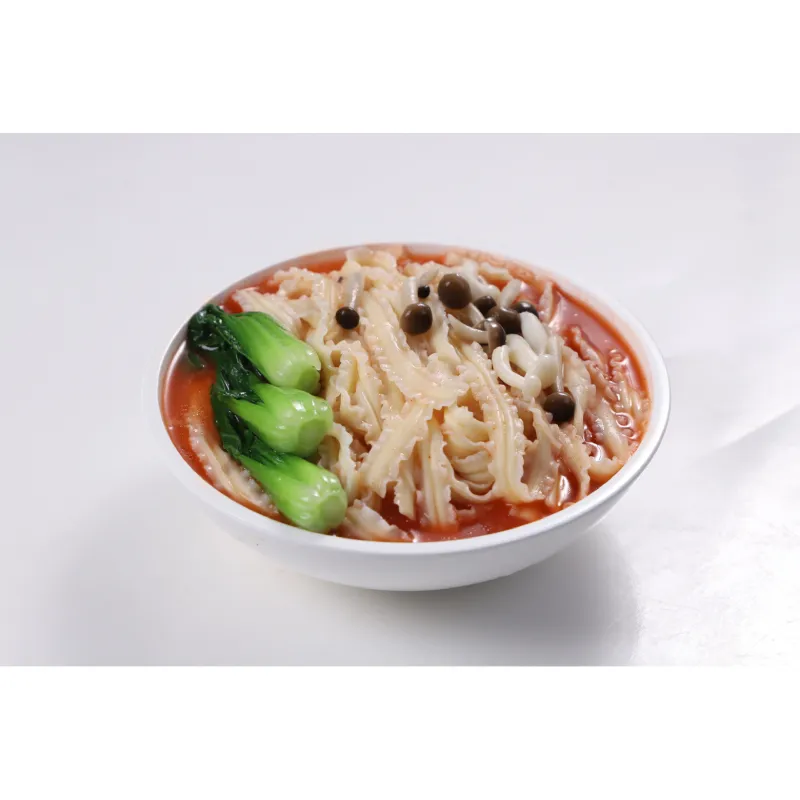Exploring the Art of Handmade Noodles and Their Cultural Significance
The Art of Hand-Pulled Noodles
In the world of culinary delights, few dishes capture the imagination and palate like hand-pulled noodles, known as lamian in Chinese. This traditional craft not only represents a culinary technique but also embodies the spirit of artistry and dedication that goes into creating this beloved staple of Asian cuisine.
Hand-pulled noodles are distinct in their chewy texture and elastic form, making them a popular choice for dishes ranging from steaming bowls of noodle soup to stir-fries and beyond. The process of making these noodles is a fascinating spectacle; it requires skill, patience, and a deep understanding of dough manipulation.
The Art of Hand-Pulled Noodles
Once rested, the dough is divided into equal portions, and the real magic begins. The chef skillfully stretches and folds the dough repeatedly, allowing it to elongate and thin out. The process involves a series of rhythmic motions—lifting, twisting, and slapping—to achieve the desired thickness and texture. As the chef expertly manipulates the dough, it transforms into long, silky strands that are cut to the desired length. The result is a medley of noodles that are both visually striking and delightful to the taste buds.
handpulled noodle

One of the most celebrated aspects of hand-pulled noodles is the versatility they offer. In northern China, they are often served in hearty beef noodle soup, enriched with spices and aromatic broth. The combination of tender meat, fresh vegetables, and the chewy texture of the noodles creates a symphony of flavors and textures that comfort the soul. In contrast, in the Xinjiang region, hand-pulled noodles are typically stir-fried with lamb and an array of colorful vegetables, showcasing a different culinary approach that highlights the adaptability of the noodle itself.
Beyond their gastronomical appeal, hand-pulled noodles carry a cultural significance deeply rooted in Chinese history. The technique is believed to date back thousands of years, and it has been passed down through generations. Many families have their own unique recipes and methods, making each bowl of noodles a personal and cultural artifact. In recent years, the rise of food culture and the fascination with artisanal techniques have brought hand-pulled noodles into the global spotlight, with chefs worldwide experimenting with the craft.
For anyone fortunate enough to witness the creation of hand-pulled noodles, it is a feast for the eyes. The rhythmic motion of the chef’s hands, the stretching and folding of the dough, creates a performance that is as captivating as it is delicious. Diners often relish the experience of watching their meal take shape right before their eyes, connecting them to the culinary traditions that have stood the test of time.
In conclusion, hand-pulled noodles are more than just a culinary delight; they represent a rich heritage that spans centuries. The intricate process of crafting these noodles showcases the artistry of the chef and highlights the cultural significance of the dish. Whether enjoyed in a bustling street market or a cozy restaurant, hand-pulled noodles remain a timeless symbol of comfort, creativity, and connection—a true masterpiece in the world of gastronomy. So next time you savor a bowl of hand-pulled noodles, take a moment to appreciate the history and artistry woven into each delicious strand.
-
Unlock the Delicious Potential of Yam NoodlesNewsAug.11,2025
-
The Authentic Taste of Lanzhou NoodlesNewsAug.11,2025
-
Savor the Art of Hand Pulled NoodlesNewsAug.11,2025
-
Indulge in the Timeless Delight of Spaghetti BologneseNewsAug.11,2025
-
Indulge in the Rich Flavor of Braised Beef NoodlesNewsAug.11,2025
-
Elevate Your Meals with the Magic of Fresh PastaNewsAug.11,2025
-
Unleash Your Inner Chef with Delectable Italian Pasta CreationsNewsAug.01,2025
Browse qua the following product new the we

















































































































